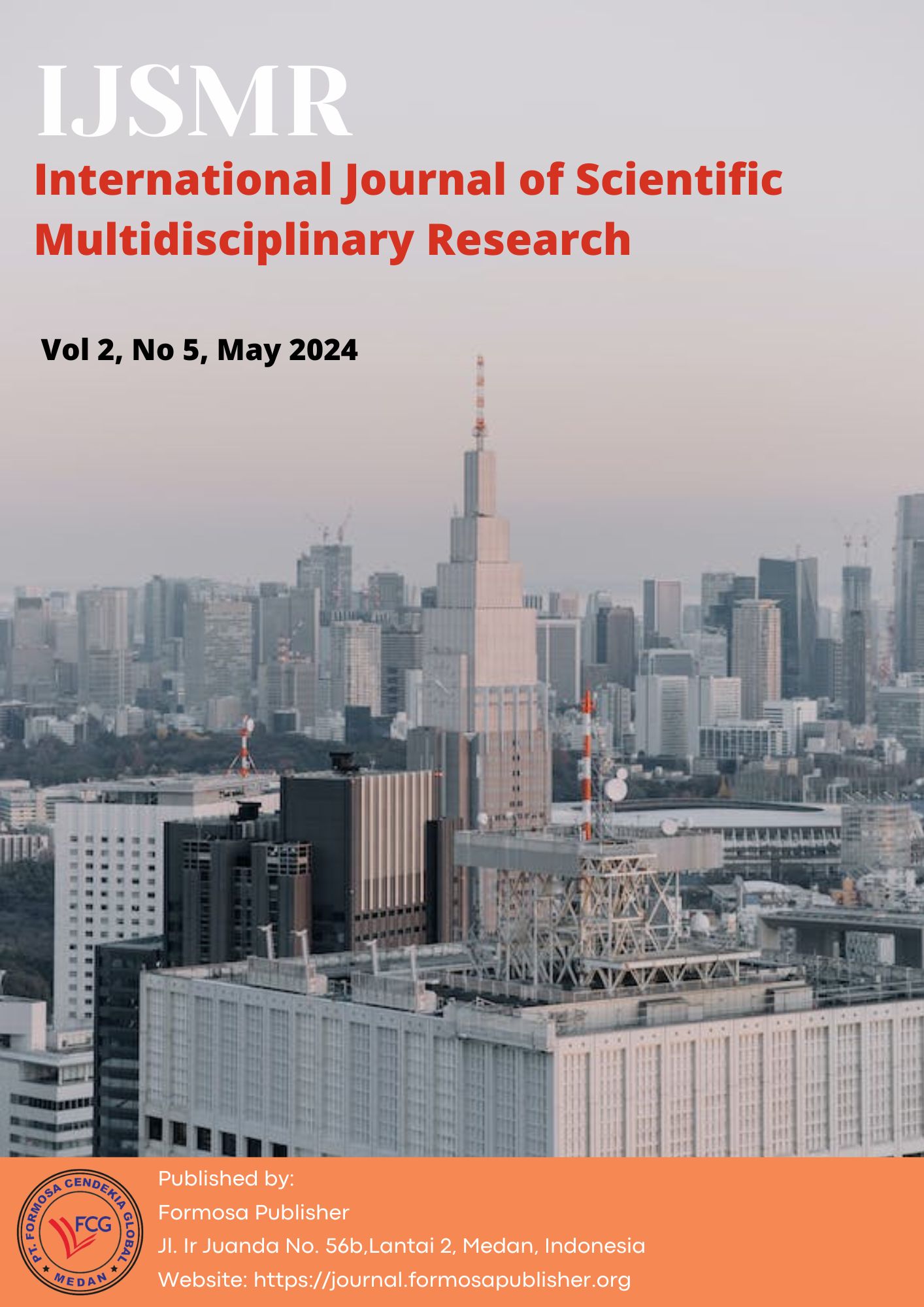Characteristics of Particle Cement Board and Wood Plastic Composite from Oil Palm (Elaeis guineensis Jacq.) Fronds
DOI:
https://doi.org/10.55927/ijsmr.v2i5.9116Keywords:
Particle Cement Board, Wood Plastic Composite, Oil Palm FrondsAbstract
The yield of oil palm fronds is 8.4 tons/ha/year [1], a huge potential that has not been used optimally. Particle Cement Board (PCB) is a biocomposite that uses inorganic adhesive, namely cement, to bind biomass particles into a board. Wood Plastic Composite (WPC) is a biocomposite that combines plastic and biomass particles molded into boards. This study used the same biomass particles—oil palm fronds—to analyze the properties of PCBs and WPCs. Characteristics assessment by measuring and testing physical and mechanical properties were density, moisture content, water absorption, thickness swelling, elasticity (MOE and MOR), and internal bond strength (IBS) of oil palm fronds PCB (refers and compared to JIS A 5417-1992 and SNI 8299-2017 standards) and WPC (refers and compared to JIS A 5908-2003 and SNI 03-2105-2006 standards). The test results on the PCB are density 1.143 g/cm3, moisture content 8.429%, water absorption 26.414%, thickness swelling 1.368%, MoE 188.899 N/mm2, MoR 5.765 N/mm2, and IBS 0.054 N/mm2. The test results on the WPC are density 0.84 g/cm3, moisture content 2.36%, water absorption 16.21%, thickness swelling 7.11%, MoE 590.87 N/mm2, MoR 13.40 N/mm2, and IBS 0.31 N/mm2. Oil palm fronds is quite well used as a raw material for making particle cement board (PCB) and Wood Plastic Composite (WPC)
Downloads
References
Churriyah, U.F. 2019. Composition of a Mixture of Cassava Stems (Manihot esculenta) and Rice Husks (Oryza sativa) on the Quality of Wood Plastic Composite (WPC) [Thesis]. Faculty of Forestry, Mulawarman University. Samarinda.
Fahmi, A. N., & Zainuri, M. (2017). Quality of Particle Cement Board from Oil Palm (Elaeis Guineensis Jacq.) Stem with Preliminary Boiling Treatment. Ulin - Journal of Tropical Forests. Vol. 1, No. 1. http://dx.doi.org/10.32522/ujht.v1i1.810
Ginting, S. P. and J. Elizabeth. 2013. Feed Technology Based on Palm Oil Plantation By-Products. Palm Oil-Cow Integration System Workshop. Medan Palm Oil Research Center.
Indonesian National Standardization Agency. 2017. Indonesian National Standard for Non-Asbestos Flat Cement Board.
Maloney, T. M. 1993. Modern Particle and Dry Process Fiberboard Manufacturing. Miller Freeman, inc. Sanfransisco.
Saraswaty, D., Dirhamsyah, M. and Indrayani, Y. 2018. Physical and Mechanical Properties of Particle Cement Board from Finir Waste Based on Material Composition and Particle Size. Sustainable Forest Journal. Vol. 6 (4) : 782 – 793.
Sidabutar, P. 2000. The Influence of Types and Levels of Catalyst on the Properties of Acacia mangium Willd Particle Cement Board. [Thesis]. Faculty of Forestry, Bogor Agricultural Institute. Bogor.
Savastano, Jr. H., Warden, P.G., Coutts, R.S.P. 2000. Cement & Concrete Composites 22 (2000) 379-384.
Tajalli, A. 2015. Guide to assessing the potential of biomass as an alternative energy source in Indonesia. Penabulu Alliance.
Wardani, L., M. Yusram, M. Faisal. 2013. Utilization of Palm Fronds Waste and Recycled Plastic (RPP) as Plastic Composite Material, in Tropical Forest Journal Vol.1 No. 1. Banjarbaru, Lambung Mangkurat University
Yu, Y., Zainun, M, S., Hongwei, W. 2015. Effect of Alkali and Alkaline Earth Metal Chlorides on Cellobiose Decomposition in Hot-Compressed Water. Industrial & Engineering Chemistry.
Downloads
Published
How to Cite
Issue
Section
License
Copyright (c) 2024 Rindayatno, Agus Nur Fahmi

This work is licensed under a Creative Commons Attribution 4.0 International License.
















